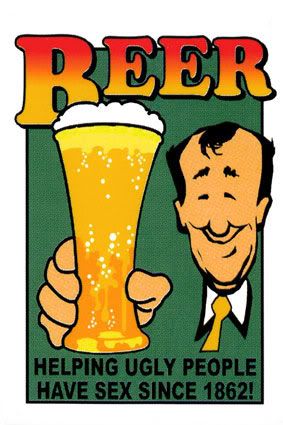In the midst of a stock market correction, a serious reassessment of the price of risk in world bond markets, and a seizing up of the high-risk mortgage market, the Bernanke Fed voted unanimously yesterday to stay patient and remain calm.
By keeping interest rates unchanged, and continuing to argue that inflation was the predominant risk for the economy, the Fed has officially told the market that the Greenspan Put is dead, or at least has a substantially lower “strike price.” Unless the Fed foresees financial market problems seriously affecting economic growth, it is unlikely to cut rates.
The most interesting thing about yesterday was that the stock market rallied after the Fed released its statement. Despite fears to the contrary, the Dow Jones Industrial Average closed up 35 points yesterday and is up again today. But this should not be a major surprise. Inflation is a much bigger long-term problem for the economy than the unwinding of excessive leverage put in place by hedge funds, and others, who were reaching for yield in a world of declining credit spreads.
Many people do not remember, but Alan Greenspan earned his stripes as a monetary wizard by doing two things, not just one. Yes, in his first real test, he took just the right tone and followed just the right policies to guide the US through the stock market crash of 1987. This earned him kudos from many on Wall Street.
But what really earned him credibility as a central banker was that after financial markets settled down, he tightened monetary policy again in the late 1980s to remove the last inflationary impulses of the 1970s. By wiping out both inflation and inflationary expectations he set the stage for lower long-term rates in the 1990s. This, along with low tax rates, free trade, and less regulation, were the keys to economic success.
Unfortunately, his final years at the helm of the Fed were not as successful. By clearly tightening too far in 1999/2000, Alan Greenspan caused the US economy to experience its first real brush with deflation since the Great Depression. While many blame that deflation on the bursting of the NASDAQ bubble, this is mistaking cause and effect. Deflation is a monetary phenomenon, not a market phenomenon.
Then, to fix this problem, and guarantee the economy would avoid recession, Chairman Greenspan cut interest rates to a 45-year low of 1%, held them too low for too long, and then lifted them too slowly.
This policy not only ended deflation, it also put significant upward pressures on inflation. While many want to blame China for rising commodity prices and a falling dollar, these trends very clearly began in 2001 as the Fed cut rates eleven times in one year.
When Chairman Bernanke took the helm in January 2006, after a mind-numbing number of rate hikes over the previous year and a half, he lifted rates three more times and then called it quits. And this is unfortunately when the second mistake happened. By stopping at 5.25%, the Bernanke Fed stopped hiking rates before it reached neutral.
We base this view of monetary policy on the model displayed in the chart nearby. It compares the federal funds rate to the 2-year change in nominal GDP. Nominal GDP growth, which is the broadest measure of total spending in the economy (real growth, plus inflation) is a good proxy for income growth (personal and business, combined). Think of it as the ability of the economy as a whole to repay its loans. If interest rates are below the growth rate of income, leverage and investment are encouraged; if interest rates are above income growth, leverage is discouraged.
Between 2001 and 2005, the Fed held interest rates well below the growth rate of the economy, just as it had done in the 1970s. In order to do this, the Fed injected a great deal of excess liquidity into the US financial system. That liquidity drove down the value of the dollar and caused commodity prices to rise. Typically easy money also drives up inflationary expectations and long-term interest rates.
But long-term interest rates remained low – a development Alan Greenspan called a “conundrum.” There has never been a convincing explanation, but some combination of hedge fund leverage, or the “carry trade,” global liquidity, and a real belief that inflation would not rise, probably explain it.
The big question is whether the Fed is actually tight today, or not. The two-year rate of nominal GDP growth is 5.7%. Historically, a neutral federal funds rate would be about 50 basis points below nominal GDP growth. So, by this measure, the Fed is now roughly neutral.
However, GDP growth has been dragged down by weakness in just one sector – housing. The rest of the economy is growing much faster. The non-housing nominal GDP growth rate is 6.4% over the past two years. As a result, it would appear that the Fed is still below neutral. Moreover, with consumption prices persistently rising faster than 2% per year, a neutral monetary policy – one capable of keeping the inflation rate flat – is not enough. Monetary policy needs to be somewhat tighter than neutral to bring inflation down.
Either way, the Fed is not tight today. As a result, we believe the Fed made the right move by taking a tough stance. Cutting rates now, at the first sign of problems with excessive leverage, and with commodity prices high and the dollar weak, would threaten to repeat the mistakes of the 1970s.
In the 1970s, the Fed punctuated a consistently loose monetary policy, with periods of tightness. When those periods of tightness threatened the economy, the Fed loosened policy again. What stopped this cycle of inflationary policy was marginal tax rate cuts, and regulatory reform, which allowed the economy to grow without easy money.
That may be the answer to help calm nerves today. It’s hard to make the case that a 5.25% federal funds rate is so high that it is harming the economy. Interest rates today are significantly lower than they were in the late 1990s. Moreover, real interest rates remain well below levels that signaled tight money in the past.
If there are problems with US policy, they exist in the tax, trade, government spending, or regulatory arenas, not the monetary policy arena. Those who are worried that the economy cannot grow with interest rates at 5.25%, should be arguing for lower corp
Wednesday, August 8, 2007
Subscribe to:
Post Comments (Atom)















No comments:
Post a Comment